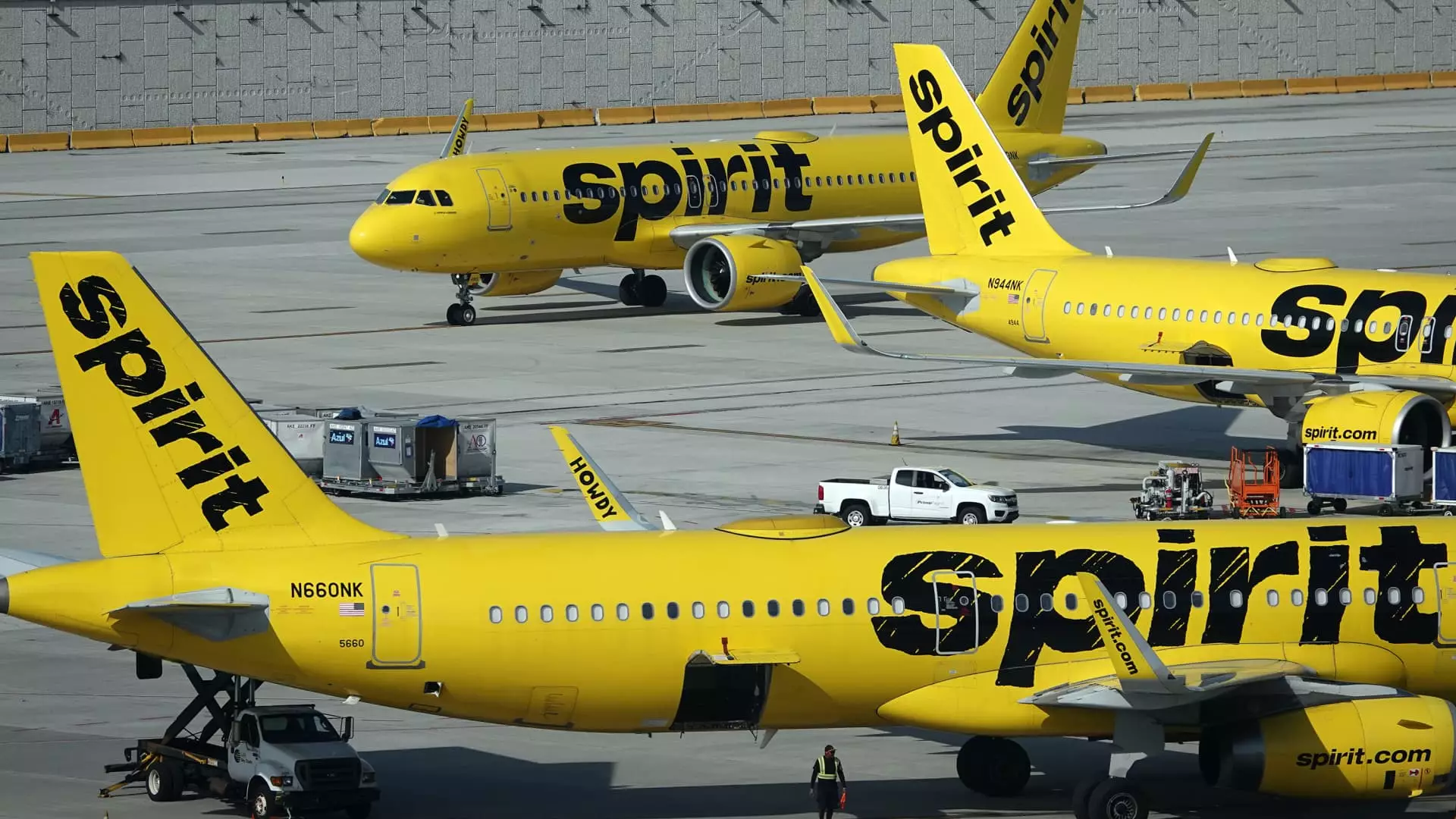Spirit Airlines has recently experienced a significant surge in its stock price, gaining over 20% in response to a newly announced plan aimed at addressing its financial difficulties. The budget airline’s recent announcement came as a breath of fresh air in what has otherwise been a tumultuous journey for the airline since the onset of the COVID-19 pandemic. By committing to cut jobs and sell off a portion of its fleet, Spirit outlined a strategic pivot in an attempt to stabilize its finances and restore investor confidence.
The airline announced the sale of 23 older Airbus aircraft, a move expected to generate approximately $519 million in revenue. This action signifies not just a reduction in operational costs but also a targeted effort to streamline operations and focus on profitability. As the airline grapples with mounting debt and fluctuating travel demand, monetizing these assets is a critical step. However, while the immediate financial gain from the asset liquidation is promising, it raises questions regarding the long-term operational capacity of Spirit and its ability to meet customer demands post-sale.
In conjunction with the aircraft sales, Spirit has indicated an intention to slash approximately $80 million in expenses, predominantly through workforce reductions. While the airline did not provide specific numbers regarding layoffs, it was noted that its capacity for 2025 would decrease significantly compared to 2023 levels. This reality implies not only a more streamlined structure but also a potentially diminished service offering, which could impact customer loyalty in the competitive budget airline sector.
The challenges Spirit faces extend beyond immediate cost issues. The airline has struggled notably to regain profitability, primarily due to shifts in consumer travel behavior and significant operational constraints stemming from the grounding of Pratt & Whitney-powered aircraft. Additionally, the airline’s financial woes were exacerbated by the failure of its planned acquisition by JetBlue Airways, which resulted in an 80% decrease in shares this year. These cumulative challenges indicate that Spirit’s road to recovery will be complex and fraught with obstacles.
Despite the tumult, there seems to be tentative optimism as Spirit Airlines has reportedly rekindled merger discussions with Frontier Airlines. This potential consolidation may offer avenues for growth and increased market stability. However, with no official comments from either airline, it remains uncertain how these discussions will impact the future trajectory of Spirit Airlines. Furthermore, the airline’s projected negative operating margin of 24.5% for the third quarter, while better than earlier estimates, still highlights the ongoing financial pressures that the company must navigate.
Spirit Airlines is at a crucial juncture. As the budget airline implements cost-cutting measures and seeks strategic partnerships, the coming months will be telling regarding how effectively these strategies can translate into sustainable operations and profitability. With the aviation sector continuously evolving, Spirit’s resilience will be tested as it aims to navigate the turbulent skies ahead.


Leave a Reply